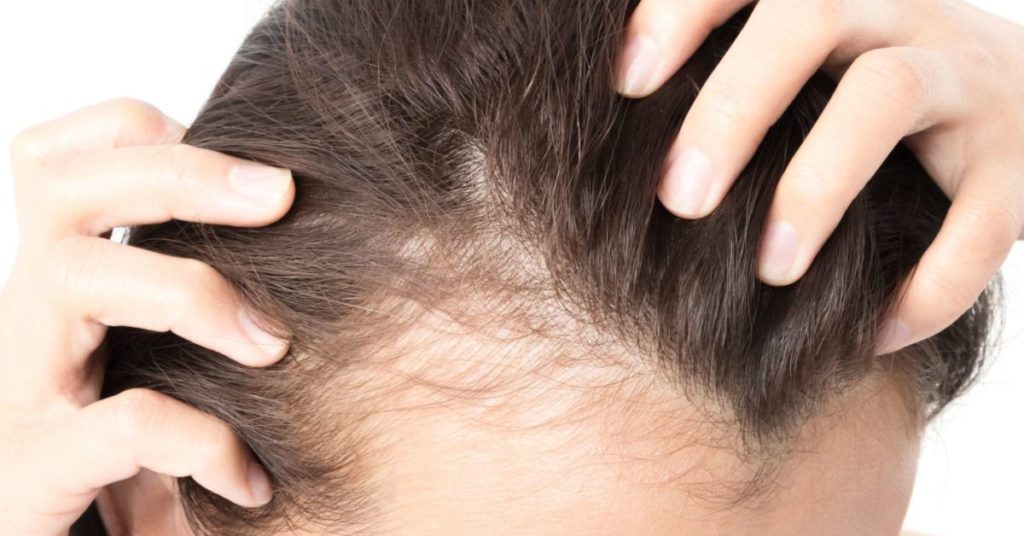Alopecia is a general concept that refers to various types of hair loss: from hair loss in certain areas to complete baldness and in extreme cases of hair loss on the face and body.
The term “alopecia” is often used as an abbreviation for alopecia areata, an autoimmune disease in which the body’s immune system attacks hair follicles. This is one of the most common forms of alopecia. There are various types of it, each of which has its characteristics and manifestations.
A change in the condition of the hair, including thinning or hair loss, can also be a manifestation of the underlying disease that needs attention. You should contact your doctor if you notice a change in density or the quality of your hair.
Early Signs of Alopecia
Any changes in the condition of the hair can be an early sign of baldness. Specific symptoms that should be addressed are:
- Hair becomes brittle, indicating that the regrown hair is weak.
- You feel that you are losing more hair than before.
- You find a tuft of hair on the pillow in the morning.
- During shampooing, shreds of hair fall out.
- A bald area on the scalp.
- Changes in the nails on the arms and legs – very small bumps, small white lines or a general deterioration in their condition.
What Does Progressive Alopecia Look Like?
As alopecia progresses, baldness can become more noticeable and spread to the entire scalp (and sometimes to the whole body):
- Multiple areas on the scalp without hair.
- Beard hair loss or bald patches in the beard area.
- Loss of hair in other parts of the body (for example, loss of eyelashes, the hair on arms and legs).
- Severe thinning or complete loss of hair on the head.
Diagnosis of Alopecia
Alopecia of any kind is diagnosed by the attending physician, trichologist or dermatologist by physical examination and studying the patient’s medical history (including a family history of the disease).
How is Alopecia Different from Other Hair Loss Forms?
The human body naturally loses a certain amount of hair (about 100 hair per day), which is replenished due to the growth of other hair; alopecia is considered a disease. It differs from the most common type of hair loss found in both men and women – androgenetic alopecia.
In men, androgenetic alopecia is manifested as the appearance of bald patches with subsequent thinning of the hair on the top of the head and temples. Alopecia areata is characterized in that it manifests itself in the form of baldness in individual areas, and not in the form of a single, successively retreating hairline.
These areas, usually the size of a large coin, appear on the scalp with different frequencies and are found in men and women of any age – while androgenetic alopecia is most common among older men.
In some cases of nasal alopecia, hair grows back naturally over time. For those who suffer from male pattern baldness, their hair will not grow naturally.
Alopecia Treatment Options
A number of medical and specialized procedures are offered for the treatment of alopecia. Appropriate treatment will be prescribed depending on the type of alopecia the patient suffers from (as well as other factors such as genetics or age).
The first step is to seek the advice of your doctor or trichologist who diagnoses the type of alopecia and discusses the right treatment options with you.
In the case of alopecia areata (and some of its other species, for example, postpartum alopecia ), hair can grow naturally over time. At the beginning of the hair, it will most likely appear white and thin, but after a few months, it will begin to recover in diameter and acquire its natural color.
Minimizing the Risk of Alopecia
1. Corticosteroids
Topical corticosteroid injections (creams or tablets) show limited success in treating hair loss, including some types of alopecia. Injections are made into the scalp and eyebrows every four to six weeks until the hair grows back.
You can also take corticosteroids in tablets, but it should be noted that alopecia will return as soon as you stop taking them. Also, there are a number of potential side effects of this method, including high blood pressure, diabetes, stomach ulcers, cataracts, and weight gain.
2. Local Immunotherapy:
Topical immunotherapy is the application of a chemical to bald areas. Application to the scalp, eyebrows or beard area stimulates hair growth in both men and women.
Minoxidil and finasteride are the two most common chemicals used in such cases and are intended for adults only. Minoxidil has minimal side effects but is ineffective with extensive hair loss. Finasteride is suitable only for men – not for women.
3. Hair Transplant and Light Treatment
There are more extreme methods for treating hair loss; however, many of them are expensive and not suitable for the treatment of alopecia. It is also necessary to take into account the side effects and individual characteristics of the patient.
- Artificial or natural hair follicles can be transplanted to areas of thinning or baldness.
- On bald areas, you can shine with ultraviolet light to stimulate hair growth.
4. Emotional Help
Although baldness alone does not harm health, it can adversely affect the emotional sphere and reduce self-esteem. It’s hard to come to terms with.
To deal with the changes that are taking place, you should talk about this with your healthcare provider (especially to determine the reasons), with friends, family members, or with a community of people experiencing the same difficulties.

